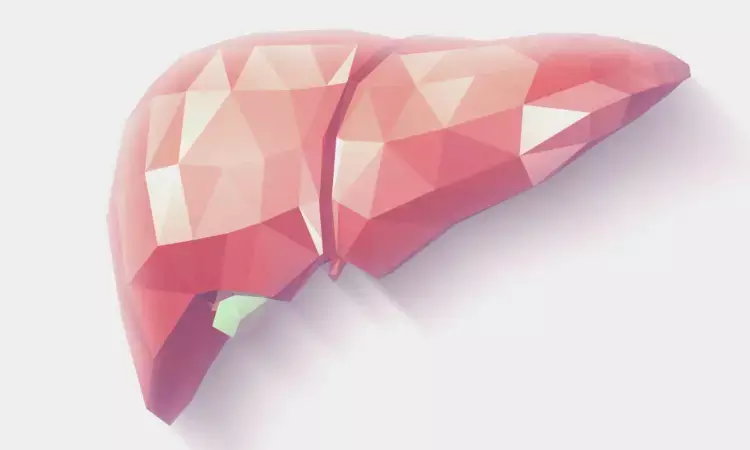- Home
- Medical news & Guidelines
- Anesthesiology
- Cardiology and CTVS
- Critical Care
- Dentistry
- Dermatology
- Diabetes and Endocrinology
- ENT
- Gastroenterology
- Medicine
- Nephrology
- Neurology
- Obstretics-Gynaecology
- Oncology
- Ophthalmology
- Orthopaedics
- Pediatrics-Neonatology
- Psychiatry
- Pulmonology
- Radiology
- Surgery
- Urology
- Laboratory Medicine
- Diet
- Nursing
- Paramedical
- Physiotherapy
- Health news
- Fact Check
- Bone Health Fact Check
- Brain Health Fact Check
- Cancer Related Fact Check
- Child Care Fact Check
- Dental and oral health fact check
- Diabetes and metabolic health fact check
- Diet and Nutrition Fact Check
- Eye and ENT Care Fact Check
- Fitness fact check
- Gut health fact check
- Heart health fact check
- Kidney health fact check
- Medical education fact check
- Men's health fact check
- Respiratory fact check
- Skin and hair care fact check
- Vaccine and Immunization fact check
- Women's health fact check
- AYUSH
- State News
- Andaman and Nicobar Islands
- Andhra Pradesh
- Arunachal Pradesh
- Assam
- Bihar
- Chandigarh
- Chattisgarh
- Dadra and Nagar Haveli
- Daman and Diu
- Delhi
- Goa
- Gujarat
- Haryana
- Himachal Pradesh
- Jammu & Kashmir
- Jharkhand
- Karnataka
- Kerala
- Ladakh
- Lakshadweep
- Madhya Pradesh
- Maharashtra
- Manipur
- Meghalaya
- Mizoram
- Nagaland
- Odisha
- Puducherry
- Punjab
- Rajasthan
- Sikkim
- Tamil Nadu
- Telangana
- Tripura
- Uttar Pradesh
- Uttrakhand
- West Bengal
- Medical Education
- Industry
Resmetirom lowers markers of CV risk and fibrosis among patients with NASH cirrhosis

In patients with NASH cirrhosis treated with resmetirom for up to 52 weeks, cardiovascular (CV) risk and non-alcoholic steatohepatitis (NASH) fibrosis indicators were lowered, says a study presented by Dr. Stephen Harrison at American Association for the Study of Liver Diseases - The Liver Meeting.
The purpose of MAESTRO-NAFLD-1 is to investigate the safety and biomarker effects of resmetirom, a selective thyroid hormone receptor beta agonist, in NASH eligible patients using non-invasive biomarkers and imaging over the course of a 52-week, >1200 patient Phase 3 randomized double blind placebo controlled NASH clinical trial. This "real life" NASH study's objective is to find non-invasive indicators that are associated with each patient's response to resmetirom therapy. 180 well-paid Child-Pugh patients with a separate open label active resmetirom therapy arm are included in the trial. Cohort 1 (n=105) of a NASH cirrhotic patient study has completed 52 weeks; cohort 2 (n=75) is still underway.
At least three metabolic risk factors (metabolic syndrome) were necessary for eligibility, as well as a diagnosis of NASH cirrhosis based on a liver biopsy or other recognized standards. The safety, relative percent decrease of MRI-PDFF (week 16), LDL cholesterol (week 24), Apolipoprotein B and triglycerides, imaging and biomarkers of fibrosis are the major and important secondary objectives of the cirrhotic arm. For 52 weeks, patients received a daily dosage of 80 or 100 mg of resmetirom.
The key findings of this study were:
1.52 weeks of therapy were completed by 105 well-compensated NASH cirrhotic patients, the majority of whom had liver biopsy confirmation of NASH cirrhosis.
2.The average age was 62.7 (9.0 (SD)), 64% of the population was female, the mean ASCVD score was 16.1%, the average platelet count was 158 K (61 K), the average MELD count was 8.2 (1.7), the average MRE count was 5.7 (2.1), the average fibroscan kPa was 24.6 (14.9), the average CAP was 318 (59), and the average MRI-PDFF was 8.1%. (5).
3.Baseline PDFF and stage of cirrhosis were negatively linked; three groups (Gp) were established: PDFF =5%, Gp 1, >5 to 8%, Gp 2, and >=8%, Gp 3.
4.Week 52 PDFF fell by 38% and fibroscan CAP dropped by 38 units in individuals with baseline PDFF > 5%.
5.Fibroscan VCTE decreased overall by -5.2 kPa and in Gp1 by -10.2 kPa; 40% of patients had a VCTE reduction of at least 25% kPa.
6.MRE fell by 0.73 kPa in Gp1 and -0.35 kPa in Gp 2-3; 23% of the time, MRE fell by less than 19%. The levels of ALT, AST, and GGT dropped from baseline.
7.Independent of baseline PDFF, liver volume (LV), which was higher in NASH cirrhosis patients at baseline, decreased by -15.9% (8%) at week 16 and -20% (9%) at week 52. Reduced MRE, MRI-PDFF, TIMP, P3NP, and SHBG responses to resmetirom were linked with reduced LV.
8.Independent of the stage of cirrhosis, resmetirom decreased LDL-C (20%), ApoB (20%), triglycerides (21%), and Lp(a) (30%).
In conclusion, as a method for treating NASH and associated disorders, the findings on resmetirom appear promising. There have been changes in lipid metabolism with this medication, and there is a difference in the cardiovascular risk factors, so it does appear to be helpful in NASH.
Reference:
Stephen A Harrison, A 52-week Phase 3 clinical trial of resmetirom in 180 patients with well-compensated Nash cirrhosis. American Association for the Study of Liver Diseases - The Liver Meeting, November 4 - 8, 2022.
Neuroscience Masters graduate
Jacinthlyn Sylvia, a Neuroscience Master's graduate from Chennai has worked extensively in deciphering the neurobiology of cognition and motor control in aging. She also has spread-out exposure to Neurosurgery from her Bachelor’s. She is currently involved in active Neuro-Oncology research. She is an upcoming neuroscientist with a fiery passion for writing. Her news cover at Medical Dialogues feature recent discoveries and updates from the healthcare and biomedical research fields. She can be reached at editorial@medicaldialogues.in
Dr Kamal Kant Kohli-MBBS, DTCD- a chest specialist with more than 30 years of practice and a flair for writing clinical articles, Dr Kamal Kant Kohli joined Medical Dialogues as a Chief Editor of Medical News. Besides writing articles, as an editor, he proofreads and verifies all the medical content published on Medical Dialogues including those coming from journals, studies,medical conferences,guidelines etc. Email: drkohli@medicaldialogues.in. Contact no. 011-43720751


